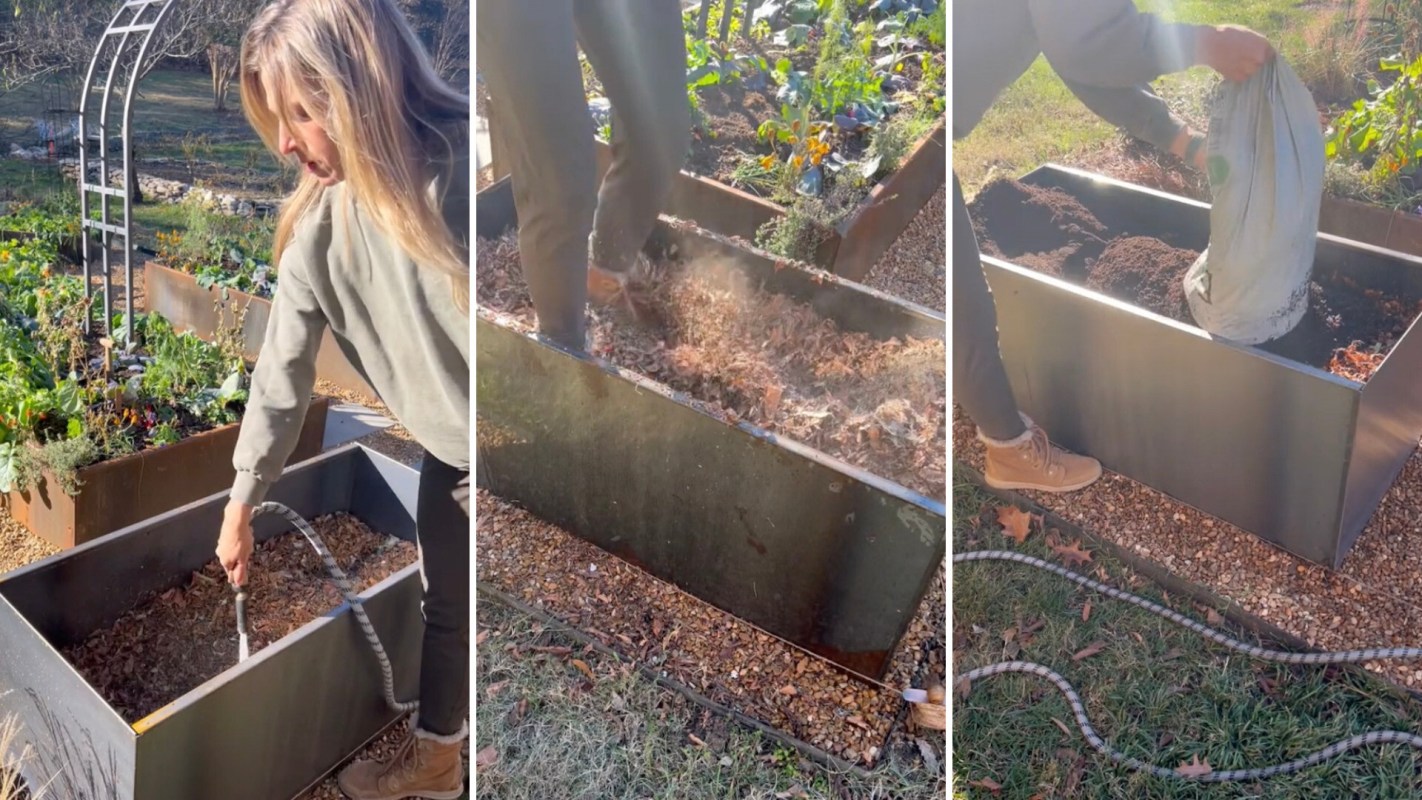When building a raised garden bed, filling it with topsoil is expensive. Leaves are a great filler that breaks down into rich compost and soil over time — and in the fall, you can get them for free anywhere you see a neighbor raking their yard.
But as one TikToker points out, you can't just throw them into the garden bed willy-nilly or you'll run into problems later on.
🗣️ Which of these benefits is your biggest motivation in gardening?
🔘 Getting outside more 🌱
🔘 Growing healthy food 🥕
🔘 Making my yard beautiful 🏡
🔘 I don't garden 🚫
🗳️ Click your choice to see results and speak your mind
The scoop
"Adding leaves to the bottom of your bed can be a great way to fill it with organic matter, slowly build great soil, and also save money," says TikToker Gardenary (@gardenary) in her video. But according to her, gardeners will be disappointed in the results without one crucial step: stepping on them.
@gardenary Leaves in raised beds can be a great way to build great soil, add organic matter and even save money. BUT the results can be disappointing if you skip the steps of compressing and watering the leaves. (The first times I tried this, the soil level dropped by nearly half within days of installing) Seven months since installing and these beds haven't been topped and still look great. And also-stepping all over leaves in a raised bed is definitely a great way to get rid of stress 😂 And PS-you can shop all my raised beds in the Gardenary shop (and tagged on this video) #raisedbeds #kitchengarden #kitchengardenrevival #kitchengardenacademy #vegetablegarden #raisedgardens #gardenary ♬ original sound - Gardenary
Gardenary demonstrates the method with a new raised bed in her garden. "Install the leaves in layers about six inches at a time, and compress the leaves and wet that layer down," she says.
She compresses the leaves by climbing into the planter and stomping on them, using boots to protect her feet, then wets them with a hose.
"Then you're ready to add the next layer of leaves," she continues. "Do this until you've got about 8 to 10 inches left at the top of your raised bed. Then fill that with topsoil, sand, and compost."
How it's helping
Topsoil is made up of organic material like leaves that have broken down to create a nutrient-rich substance for plants to grow in. Adding leaves and even sticks and logs of your own is an inexpensive and eco-friendly way to stretch your existing topsoil since the plant material will break down as your garden grows and keep releasing food for your garden.
However, soil is dense and compact, while leaves have lots of space for air in between. As they settle naturally and break down, the leaves compress downward. According to Gardenary, "If you don't do it this way, you could end up with your soil level dropping within days of installing the garden."
However, if you use her method, the leaves are pre-compressed and won't settle nearly as much. "The soil level is still going to go down, but not nearly as quickly as it would if you forgot to compress and wet those leaves," she says. "I did this about seven months ago, and the soil level in this bed has only dropped about an inch and the plants are looking great."
What people are saying
As some commenters pointed out, this doesn't just work with leaves.
"I use pine needles in mine!" said one user. "I have a pine tree that releases so many, so I found a use for them."
"Can you put cardboard in it?" asked another commenter.
"Yes," replied a third user. "Better with no print on it, just plain cardboard."
Join our free newsletter for easy tips to save more, waste less, and help yourself while helping the planet.









